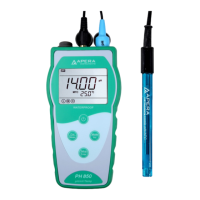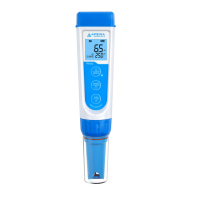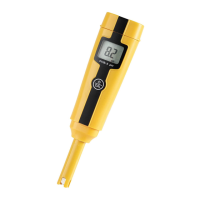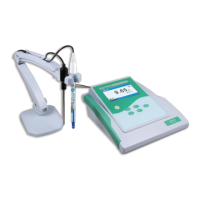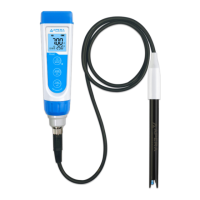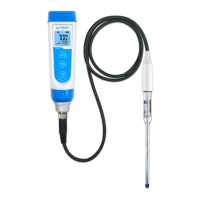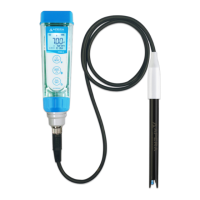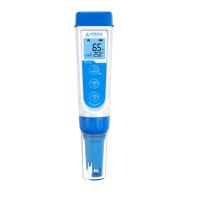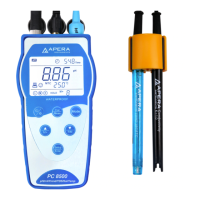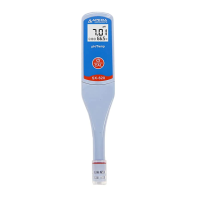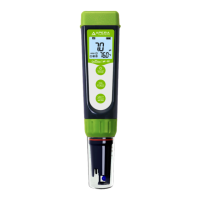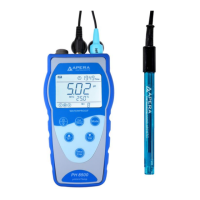
Do you have a question about the Apera Instruments PH8500 and is the answer not in the manual?
| Brand | Apera Instruments |
|---|---|
| Model | PH8500 |
| Category | Measuring Instruments |
| Language | English |
Overview of microprocessor-based meter features like auto-calibration and USB port.
Details on 1-3 points auto-calibration, buffer recognition, and stability criteria.
Key technical data including measuring range, resolution, and accuracy for pH and mV.
Data storage, output, power, IP rating, and dimensions of the meter and case.
Explanation of icons and segments displayed on the meter's LCD screen.
Description of button operations for measurement, calibration, and settings.
Details on BNC and RCA sockets for electrode and temperature probe connection.
Explains reading stability icons and automatic lock-up display function.
Procedures for manual/automatic storage, data recall, and clearing stored values.
Information on the meter's automatic power-off feature and its setting.
How to manually input temperature values for compensation.
Details on the 201T-F electrode, its construction, and connection.
Factors to consider before calibrating pH, including buffer solutions and frequency.
Step-by-step guide for performing a three-point pH calibration.
Instructions for calibrating the meter using custom buffer solutions.
Procedure for performing a sample test and understanding self-diagnosis icons.
Guidelines for daily maintenance, cleaning, and care of the pH electrode.
How to measure ORP values using the meter and an ORP electrode.
Information on ORP calibration, cleaning, and activation.
Accessing and navigating the main parameter setting menus (P1.0, P3.0).
Detailed parameters for pH settings like buffer selection and stability criteria.
Parameters for basic settings like temperature unit, backlight, and storage timing.
Specific settings for pH resolution, due calibration, and last calibration date.
Detailed settings for date, time, clearing data, and auto power-off.
Configuration for the automatic lock-up feature based on reading stability.
Computer specifications needed for the PC-Link software.
Overview of the PC-Link software interface and its components.
Step-by-step guide to install the PC-Link software on a computer.
Information on connecting the meter to a computer via USB.
How to upload, store, and process data using the PC-Link software.
